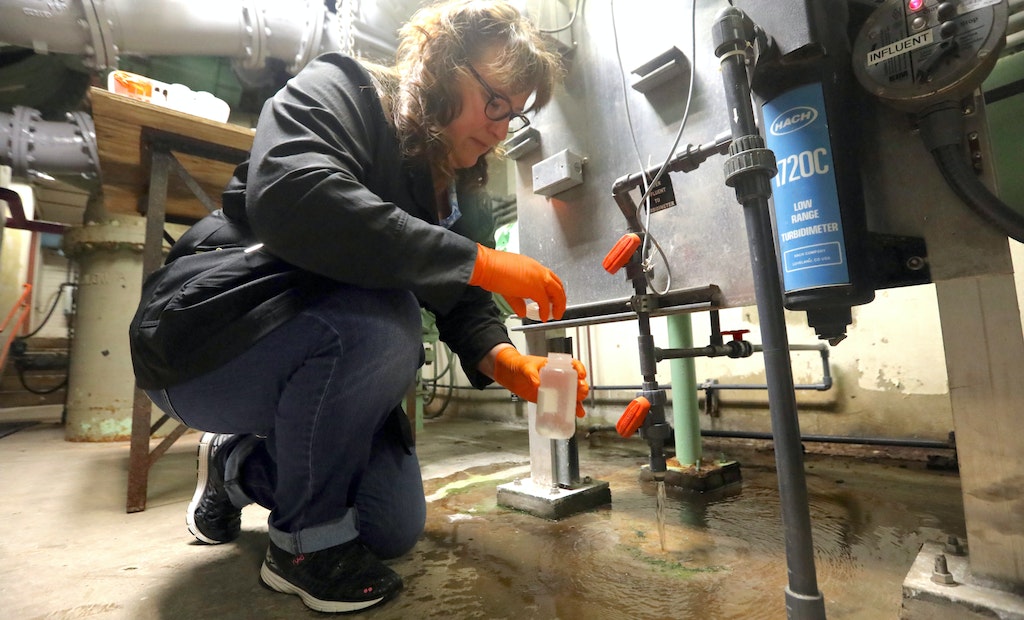Interested in Safety?
Get Safety articles, news and videos right in your inbox! Sign up now.
Safety + Get AlertsThe Environmental Protection Agency has proposed a new plan to limit the presence of per- and polyfluoroalkyl substances (PFAS) in drinking water to the lowest detectable levels. This initiative aims to save thousands of lives and prevent severe health issues, including cancer, according to the agency.
Radhika Fox, assistant EPA administrator for water, emphasized the known health risks associated with long-term PFAS exposure. Fox expects the proposal to be a "transformational change" for U.S. drinking water safety, potentially reducing PFAS exposure for nearly 100 million Americans.
The EPA's proposal seeks to set strict limits of 4 ppt for two common PFAS compounds, PFOA and PFOS, as well as regulate the combined amount of four other PFAS types — PFNA, PFHxS, PFBS, and GenX Chemicals — as a mixture. If finalized, water providers will be required to monitor for these chemicals. It will also require systems to notify the public and reduce PFAS contamination if levels exceed the proposed regulatory standards.
There will be a 60-day public comment period before the agency issues its final rule, which is expected by the end of this year or early 2024. A public hearing will be held May 4. Water systems will have three years from the date of the rule's finalization to comply with the new limits, according to the proposal.
“Putting forward regulations like this helps to ensure public health; that is the core mission of everyone in the water sector,” Walt Marlowe, WEF executive director, said in a statement on WEF's website. “As a community, we have a responsibility to engage with this rule-making procedure to ensure that all decisions are based on sound science and do not overlook unintended consequences that could come along with these limits.”
The EPA projects that the proposed PFAS drinking water guidelines will incur an annual expense of $772 million for compliance — a figure some entities in the drinking water industry are questioning. However, the health advantages of this regulation are anticipated to save tens of thousands of lives each year and result in $1.2 billion in healthcare cost reductions.
Association of Metropolitan Water Agencies CEO Tom Dobbins says AMWA will offer EPA "a robust set of comments to help strengthen the rule and ensure decisions are made with the best available science while taking costs into account, as required under the Safe Drinking Water Act."
AMWA also plans to review the proposed rule, the supporting information and other relevant documents to assess the analysis EPA used to determine what to regulate and at what levels.
AMWA is concerned about the overall cost drinking water utilities will incur to comply with the proposed regulations, according to Dobbins. The EPA estimates that the annual quantified capital and O&M costs for this rule-making will be $772 million. For comparison, AMWA member Cape Fear Public Utility Authority's estimated capital cost for its treatment was $43 million, and its annual operating cost was $3-5 million. If about 16 utilities of similar size to Cape Fear nationwide had to implement comparable treatment techniques, the total cost would exceed EPA's estimate, according to AMWA.
"Ultimately, without more federal support for upgrading current treatment technologies, average Americans will have to pay the cost of further treatment through higher rates for their water," Dobbins says, adding that the association is planing to ask the EPA to extend the current 60-day public comment period to 90 days to ensure time for constructive feedback.
The EPA is requesting input on the proposal from all stakeholders, including the public, water system managers and public health professionals. Comments may be submitted through the public docket, identified by Docket ID No. EPA-HQ-OW-2022-0114, at www.regulations.gov. For more information on this proposal, visit EPA’s PFAS webpage.






